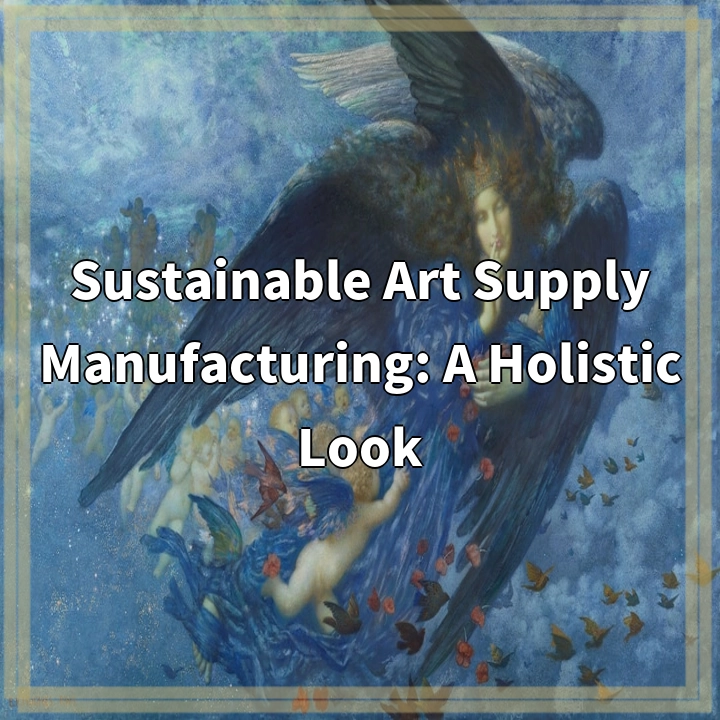
What is Sustainable Art Supply Manufacturing?
Sustainable art supply manufacturing refers to the production of art materials and supplies using environmentally-friendly and socially responsible methods. This involves considering the entire lifecycle of the products, from raw material extraction to disposal, and ensuring minimal negative impact on the environment and communities.
Real-World Problems Associated with Sustainable Art Supply Manufacturing
Despite the growing interest in sustainable practices, the art supply manufacturing industry still faces several challenges and obstacles. Here are some of the predominant issues:
1. Sourcing Sustainable Materials
A key challenge is sourcing sustainable materials for art supplies. Many art materials require various raw materials, some of which may have negative environmental or social impacts. For example, the extraction of certain pigments or metal components used in art supplies could lead to habitat destruction, pollution, or exploitation of local communities. Finding alternative, eco-friendly materials without compromising on quality can be a complex yet crucial task.
2. Energy Consumption and Carbon Footprint
Art supply manufacturing often involves energy-intensive processes, such as refining, milling, and packaging. This results in a significant carbon footprint. From the extraction of raw materials to the transportation of finished products, every step contributes to greenhouse gas emissions. Manufacturers need to explore ways to reduce energy consumption, increase energy efficiency, and transition to renewable energy sources to mitigate this impact.
3. Packaging Waste
The art supply industry generates a substantial amount of packaging waste, including plastic tubes, bottles, and wrapping materials. These materials often end up in landfills or contribute to pollution in oceans and waterways. Encouraging manufacturers to adopt sustainable packaging solutions, such as using recycled and biodegradable materials, can help reduce this environmental burden.
4. Toxic Chemicals and Waste Disposal
Certain art supplies, such as paints, solvents, and varnishes, may contain toxic chemicals that can be harmful to human health and the environment. Proper disposal of these hazardous materials is crucial to prevent pollution and potential health risks. It is important for manufacturers to prioritize the use of non-toxic, low VOC (volatile organic compound) materials and educate artists and consumers about safe disposal practices.
5. Lack of Transparency and Greenwashing
Some art supply manufacturers may engage in greenwashing, misleading consumers by making false or exaggerated claims about the sustainability of their products. This lack of transparency makes it challenging for artists and consumers to make informed choices. Establishing clear guidelines, certifications, and third-party audits can help ensure credibility and prevent misleading practices within the industry.

Solutions for Sustainable Art Supply Manufacturing
Addressing the challenges faced by the art supply manufacturing industry requires innovative solutions and a commitment to sustainable practices. Here are some potential strategies:
1. Sustainable Material Alternatives
Art supply manufacturers can explore and invest in sustainable alternatives to traditional materials. This may involve sourcing plant-based pigments, using recycled or upcycled materials, or promoting natural and non-toxic options.
2. Energy Efficiency and Renewable Energy
Implementing energy-efficient technologies and processes can significantly reduce the carbon footprint of art supply manufacturing. Manufacturers can also consider transitioning to renewable energy sources to power their operations and further minimize environmental impact.
3. Eco-Friendly Packaging
Embracing sustainable packaging solutions is essential. This may include using recycled and recyclable materials for packaging, minimizing excess packaging, and exploring innovative alternatives such as compostable packaging materials.
4. Non-Toxic and Safe Alternatives
Art supply manufacturers should prioritize the development and production of non-toxic materials. This involves using low VOC and non-hazardous components, ensuring proper labeling and instructions for safe use, and promoting safe disposal practices.
5. Transparency and Certification
Promoting transparency in the industry is essential to combat greenwashing. Manufacturers can seek certifications from recognized organizations to validate their eco-friendly claims. Third-party audits can help maintain credibility and accountability.
6. Collaboration and Education
Collaboration between manufacturers, artists, and consumers is crucial. This can involve workshops, educational campaigns, and platforms for sharing information and best practices. By raising awareness and promoting sustainable choices, the industry can collectively drive positive change.















